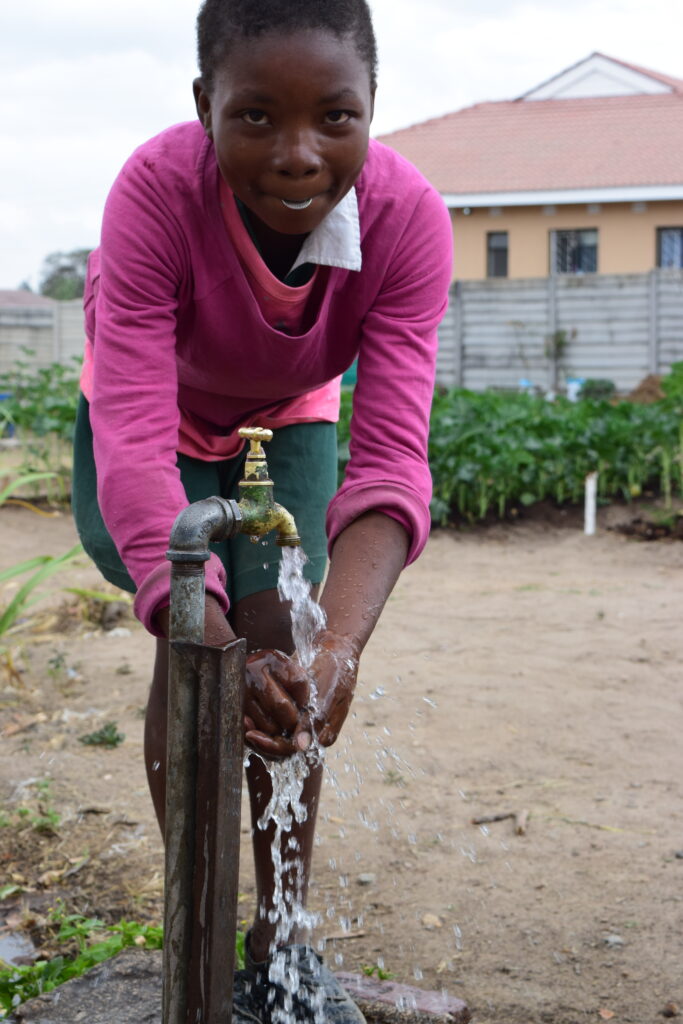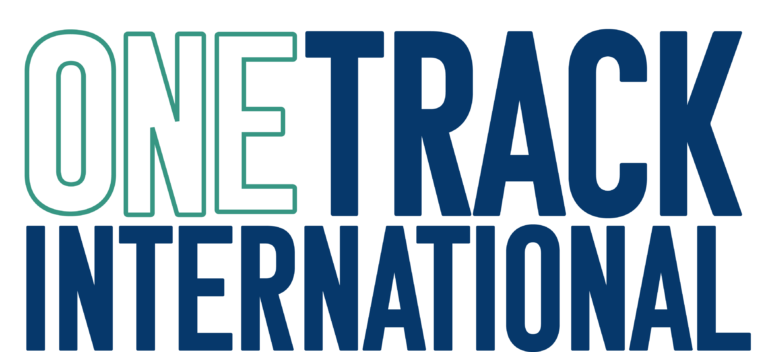Story by Marlee Prather
Clean water and sanitation are two important concerns around the world. Water is considered the most important resource for humans. At ONETrack International, we ensure the youth in our programs have access to clean water so that they can grow up to live happy, healthy, and fulfilled lives.
The Office of the High Commissioner for Human Rights released a document titled, “The Right to the Highest Attainable Standard of Health”, which was adopted by the Committee on Economic, Social and Cultural Rights on August 11, 2000. This document goes into detail about health being a fundamental right that every human being should be able to enjoy to the highest attainable standard. Clean water and sanitation are vital aspects of health that all humans should be able to attain with ease.
According to the World Health Organization (2019), it is estimated that 785 million people lack access to clean drinking-water, and they fear that by the year 2025 up to half of the world’s population will live in a water-stressed area. A water-stressed area is one where the demand for water exceeds the supply or for when the demand is so high that the community’s access to the resource is limited (EEA, n.d.). One of the biggest dangers in consuming contaminated water is the ingestion of illness-causing bacteria and parasites, which can cause diarrhea, vomiting, and in many cases lead to death. Children, whose bodies and immune systems are still developing, are especially at risk of dying or becoming seriously ill from water-borne illnesses. According to the CDC (2019), nearly 80% of illnesses in developing countries are a result of contaminated water and could be prevented with improved water and sanitation services. The CDC (2019) claims that 9.1% of the global disease burden and 6.3% of all deaths have the potential to be prevented with clean water and sanitation.

Not only does providing clean water reduce illness and fatalities, it has also been shown to reduce poverty, create a healthier environment, improve the economy, and reduce tensions that can arise as a result of a limited amount of clean water. This is why ONETrack International ensures that the communities with which we partner have access to clean water and proper sanitation.
Water is important for many areas of one’s life: drinking, recreational purposes, production of food, sanitation, and various others. Therefore, when children do not have access to clean water, it can have a broad impact on their health, education, nutrition, and learning abilities (UNICEF). Many people around the world live without clean water, especially in developing countries. According to the U.S. Center for Disease Control and Prevention, 780 million people worldwide do not have access to adequate water sources. Furthermore, according to the United Nations (UN), 1 in 3 people do not have access to safe drinking water, and 2 out of 5 people do not have access to facilities to wash their hands, which has additional implications for good health and hygiene. The World Health Organization claimed in 2019 that globally, close to 2 million people were using drinking water sources that were contaminated with feces. UNICEF states that 3 billion people do not have access to facilities where they are able to wash their hands with soap, and around 673 million people still participate in open defecation.
Water is a basic life necessity, and in 2010, this was finally recognized by the UN General Assembly. Interestingly, any mention of water was left out of the UN’s Universal Declaration of Human Rights (UNUDHR) that was published in 1948. This document was to be used as a universal standard of rights for all people and countries around the world. However, in 2010 it was officially acknowledged that clean drinking water and proper sanitation are essential components for the standards in the UNUDHR to be realized. They recognized that everyone has the right to “sufficient, continuous, safe, acceptable, physically accessible, and affordable water for personal and domestic use” (The World Health Organization, 2019). The United Nations broke down each of these expectations.
First, the water supply must be sufficient and continuous for domestic and personal use. The WHO estimated that between 50 and 100 liters of water per day per person would be needed to meet those basic needs. Second, water must be safe. National and/or local standards are used to measure the quality of drinking water. This typically includes “free from chemicals, micro-organisms, and radiological hazards”. Third, water needs to be acceptable. This includes color, odor, and taste. The UN states that water facilities should be culturally appropriate and sensitive to privacy requirements, gender, and lifecycle. Fourth, water should be physically accessible. Access to clean water and sanitation is a human right, and this means within the vicinity of a household, workplace, health institution, or educational institution. The WHO claims that it has to be within 1,000 meters of a home and no more than 30 minutes away.
Children are especially at risk for diseases that are contracted from unsafe water consumption …
Fifth, water should be affordable. The water and the services/facilities must be affordable for every person. A suggestion from the United Nations Development Programme (UNDP) is that water should not go above 3% of a household income (United Nations Department of Economic and Social Affairs).
UNICEF claims that children who live in or near a conflict zone are 20 times more likely to die from a diarrhoeal disease than from the conflict. Furthermore, the WHO estimates that “by 2025, half of the world’s population will be living in water-stressed areas”, which may cause a spike in the spread of infectious diseases. This could mean many things for children, such as more illness, more missed days of school, more pain, and more death.
Vaccinations for children and clean water and sanitation being inaccessible increases the transmission rates of many diseases such as polio, cholera, typhoid, diarrhoea, hepatitis A, and dysentery (World Health Organization, 2019). The WHO has provided evidence of the importance of handwashing to reduce the spread of diseases, because it is one of the most effective ways of preventing the spread of germs (United Nations, 2019). According to the WHO (2019), in developing countries, “22% of health care facilities have no water service, 21% no sanitation service, and 22% no waste management service”. It is estimated that 829,000 people die each year from diarrhea, which is a result of not having safe drinking-water, sanitation, and hand hygiene (World Health Organization, 2019).
In 2017, another preventable disease, schistosomiasis, which is “an acute and chronic disease caused by parasitic worms contracted through exposure to infested water”, was found to have infected over 220 million people (World Health Organization, 2019). Children are especially at risk for diseases that are contracted from unsafe water consumption making the need for better pediatric health care that much more important. It is likely that developing communities that do not have access to clean water and sanitation are also lacking in adequate pediatric care. For these communities that do not have the ability to provide adequate pediatric care, having clean water and sanitation would likely need to be the first step to avoiding these health risks, until better health care is able to be provided. Once safe water and sanitation are available and health care is improved, there could be results of many long-term benefits, such as better school attendance (World Health Organization, 2019).
Vaccinations for children and clean water and sanitation all play a large role in the health of children. Children living in conflict areas are at an increased risk of many things, with death near the top of the list. It is important that we learn about things such as clean water and sanitation and child vaccinations so that we can better help children globally, but specifically those who are at a high risk of vulnerability.
That is what we seek to do at ONETrack International: ensure the communities in which we partner with have access to clean water and sanitation, as well as vaccinations for children.
References
Centers for Disease Control and Prevention (CDC). (2019). Safe Water System: Disease and SWS Impact. https://www.cdc.gov/safewater/disease.html.
European Environment Agency. Water stress.
https://www.eea.europa.eu/archived/archived-content-water-topic/wise-help-centre/glossary-definitions/water-stress#:~:text=with%20javascript%20off.-,HelpCenter%20Definition,%2C%20dry%20rivers%2C%20etc.
Office of the high commissioner for human rights. (2000, August 11). CESCR General Comment No. 14: The Right to the Highest Attainable Standard of Health (Art. 12). https://www.refworld.org/pdfid/4538838d0.pdf.
United Nations. Sustainable development goals: Goal 6: Ensure access to water and sanitation for all. https://www.un.org/sustainabledevelopment/water-and-sanitation/.
World Health Organization. Drinking-water. (2019, June 14).
https://www.who.int/news-room/fact-sheets/detail/drinking-water#:~:text=Safe%20and%20readily%20available%20water,contribute%20greatly%20to%20poverty%20reduction.


